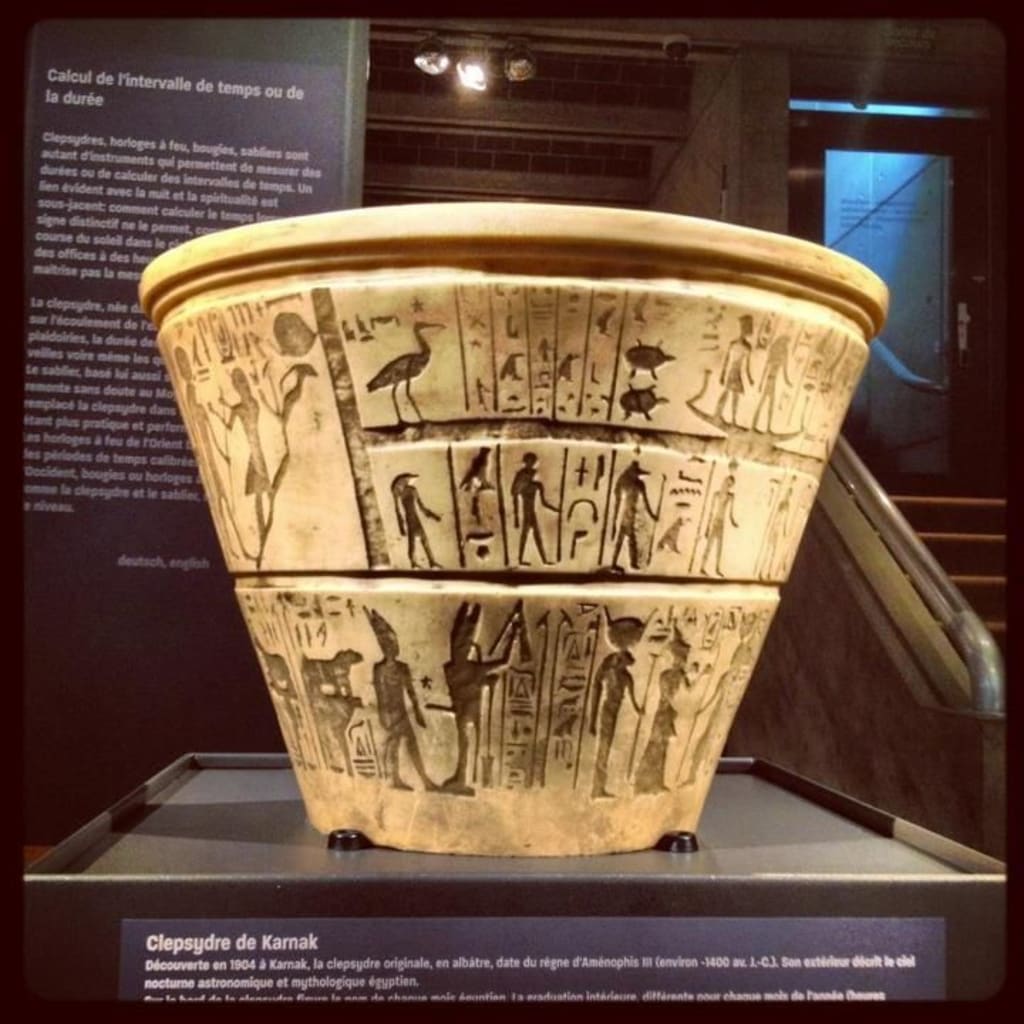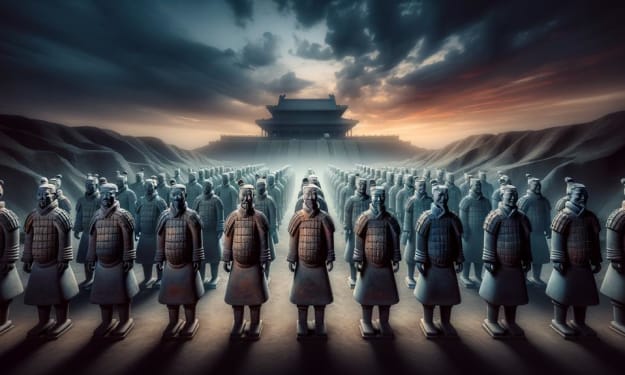Ancient Egyptian Water Clocks: The Ingenious Clepsydra of Early Timekeeping
History

The ancient Egyptian water clock, also known as the clepsydra, stands as a remarkable example of early timekeeping technology, showcasing the ingenuity and scientific knowledge of ancient Egypt. This fascinating device, used as early as the 16th century BCE, highlights the Egyptians' advanced understanding of measuring time and their ability to create sophisticated mechanisms for practical purposes. The clepsydra's design and functionality offer a window into the daily lives and complex societal structures of one of history's most intriguing civilizations.
The clepsydra operated on a simple yet effective principle: water would flow at a consistent rate from one container to another, allowing the measurement of time based on the amount of water that had passed through. These clocks typically consisted of a stone or ceramic vessel with a small hole at the bottom through which water would slowly drip. Markings inside the vessel indicated the passage of time as the water level dropped. This method of timekeeping was particularly useful at night or during cloudy days when sundials were ineffective.
The clepsydra was used in various aspects of Egyptian society, from religious ceremonies to daily life. Priests utilized water clocks to measure the duration of rituals and to maintain the precise timing required for their complex religious practices. In the secular realm, clepsydras helped regulate work schedules and manage legal proceedings, ensuring that tasks and events adhered to strict time limits. This widespread use underscores the importance of accurate timekeeping in maintaining the order and efficiency of ancient Egyptian society.
The design of ancient Egyptian water clocks was not only functional but also aesthetically pleasing. Many clepsydras were intricately decorated with hieroglyphs and images depicting deities, astronomical symbols, and scenes from daily life. These decorations served both a symbolic and a practical purpose, reinforcing the clock's role in the cosmic order and aligning its function with the spiritual and cultural beliefs of the time. The artistry involved in their creation reflects the Egyptians' deep appreciation for beauty and their ability to integrate it into everyday objects.
The evolution of the clepsydra also illustrates the Egyptians' commitment to improving and refining their technological innovations. Over time, they developed more complex water clocks with multiple chambers and adjustable flow rates, allowing for greater accuracy and versatility. These advancements demonstrate the Egyptians' ability to adapt and enhance their inventions in response to changing needs and conditions, a hallmark of their technological and scientific prowess.
The clepsydra's influence extended beyond ancient Egypt, as its principles were adopted and adapted by other cultures throughout history. The Greeks and Romans, for instance, built upon the basic design of the water clock, creating more elaborate and precise versions that continued to be used for centuries. This cross-cultural exchange of knowledge highlights the enduring impact of Egyptian innovation on the broader development of timekeeping technology and scientific thought.
Despite the passage of millennia, the legacy of the ancient Egyptian water clock endures. Modern researchers and historians continue to study these devices, uncovering new insights into their construction, use, and significance. The clepsydra serves as a tangible link to the past, offering a glimpse into the ingenuity and creativity of a civilization that laid many of the foundations for modern science and technology.
In conclusion, the ancient Egyptian water clock, or clepsydra, represents a remarkable achievement in early timekeeping technology. Its innovative design, widespread use, and aesthetic beauty underscore the Egyptians' advanced understanding of science and their ability to create functional yet artistic objects. The clepsydra's legacy continues to inspire and inform our appreciation of ancient ingenuity, reminding us of the enduring contributions of Egypt's remarkable civilization to the world of science and technology. As we delve deeper into the mysteries of these ancient devices, we gain a greater appreciation for the sophisticated minds that crafted them and the timeless quest for precision and order that they embody.
About the Creator
Marveline Merab
“History never repeats itself. Man always does.”
― Voltaire
Enjoyed the story? Support the Creator.
Subscribe for free to receive all their stories in your feed. You could also pledge your support or give them a one-off tip, letting them know you appreciate their work.






Comments
There are no comments for this story
Be the first to respond and start the conversation.